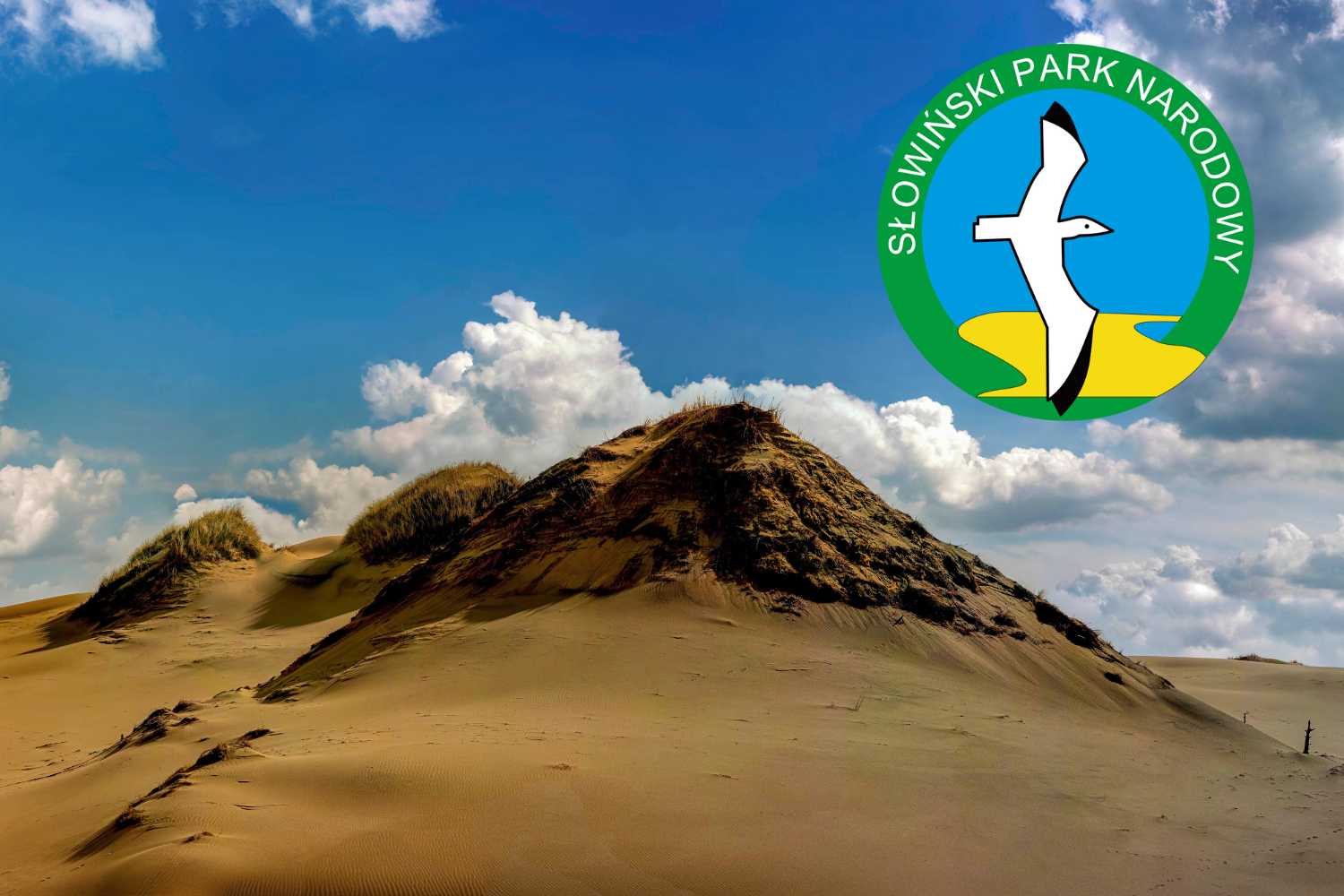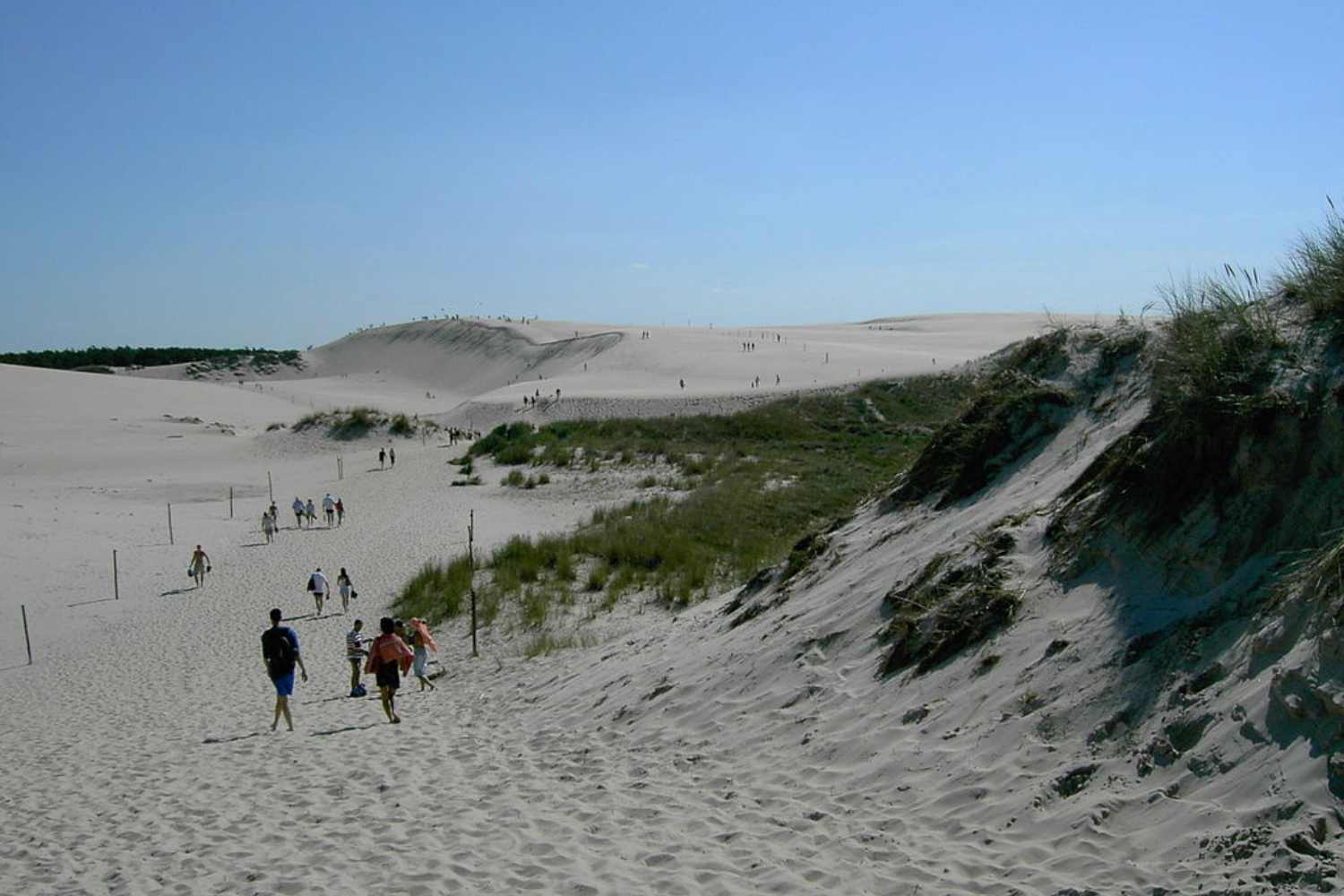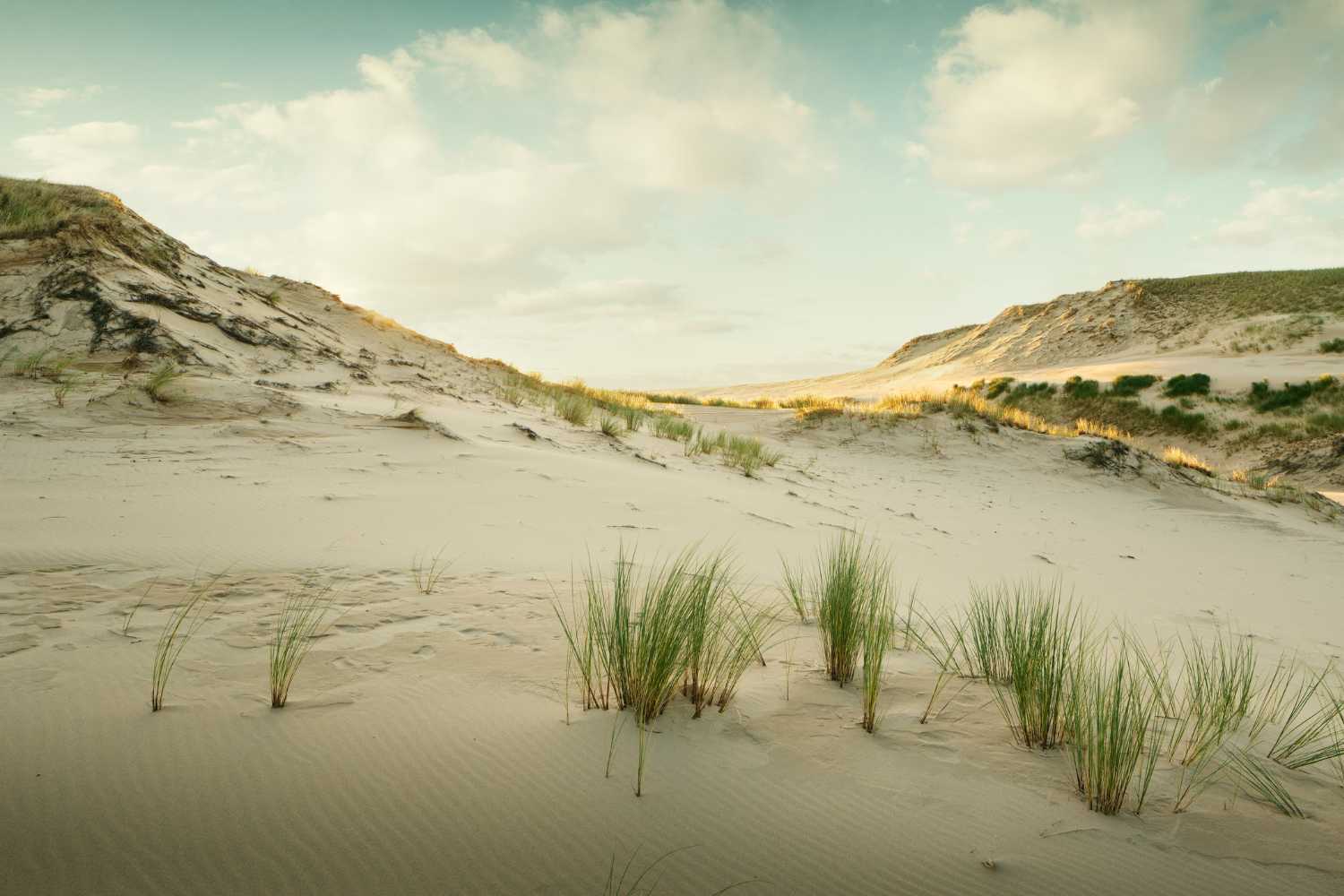Słowiński National Park in Poland features moving sand dunes up to 42m (138 feet) high, earning it the nickname "Sahara of the North." A unique Baltic coast ecosystem with rare birds and ancient culture.

Table of contents
We’ve decided to take you to a corner of Poland where the sea gives way to sand, which in turn becomes wind—an artistic wind that draws waves, sculpts crests, and erases paths. We’re in Słowiński National Park, overlooking the Baltic Sea, a place that resembles nothing else, and for this reason remains etched in memory like a mirage. Some call it “the Sahara of the North,” though this definition, to be honest, doesn’t quite fit.
Located in the northern part of the country, in the Pomeranian region, Słowiński National Park spans approximately 327 square kilometers (126 square miles), a vast area that hosts a great variety of landscapes—perhaps the most characteristic aspect of this place. Within just a few kilometers, you transition from pine forests to sandy expanses, from coastal lakes to peat bogs, from dunes rising up to 40 meters (131 feet) high to solitary beaches where time seems to have stopped. And when you arrive at Łeba, the small town that serves as the gateway to the park, you immediately sense a kind of suspension, as if the landscape is preparing to become, once again, something else.
The dunes that walk
The heart of the park is represented by the famous mobile dunes—enormous hills of sand pushed by the wind toward the interior. Every year they move several meters, erasing trees, covering paths, rewriting the geography of the place—a slow but inexorable process. The tallest ones, like Łącka Góra, exceed 40 meters (131 feet). Climbing them is tiring, but the view from above is rewarding: a white wave crashing against the forest line. And beyond, the blue of the Baltic cutting the horizon.
The mobile dune Łącka, among the park’s main attractions: 42 meters (138 feet) high, it moves up to 5 meters (16 feet) per year.
The sensation is of finding yourself in a surreal landscape: no vegetation, only sand and sky. The sound of the wind is constant, but not annoying. It seems like the breath of the place, something that accompanies and guides, where silence is not emptiness but presence.

Between sea and brackish lakes
Słowiński is a coastal park, certainly, but the sea isn’t the only protagonist. Alongside the dunes open wide expanses of fresh and brackish water, like lakes Łebsko and Gardno, remnants of the ancient marine gulf. Shallow basins, but at the same time of extreme ecological importance, since numerous species of aquatic birds live here, some of which are rare and/or threatened. The park is indeed a paradise for birdwatching enthusiasts, who can admire herons, cormorants, and sea eagles, provided they bring good binoculars and a bit of patience.
Once, these areas were inhabited by a community of Slavic fishermen, the Slovinci, from whom the park takes its name—a people who knew how to coexist with all the typical elements of the area: water, wind, and sand. Today, few traces of that culture remain, preserved in the small Ethnographic Museum of Kluki, in the southern part of the park. A visit to the museum is definitely recommended to fully understand the profound relationship between man and landscape, between struggle and survival that permeates this magical place.

A fragile ecosystem
The fascination of Słowiński doesn’t end with its visual aspect. It’s a fragile place, in continuous balance between natural elements, where environmental protection is rigorous. Access to the dunes, for example, is regulated, and in some areas you cannot go unless accompanied by authorized guides. There are well-marked trails, bike paths, panoramic viewpoints, but everything is designed to minimize human impact.
In 1977, UNESCO included the park in the list of Biosphere Reserves, a recognition that rewards both biodiversity and the ability to conserve an environment in continuous transformation. The forces at play—wind, sand, water—are so powerful that they continuously redesign the landscape, and whoever visits the park, in some way, participates in the movement of a dynamic nature in continuous transformation.

How to get there and when to visit
The best period to visit Słowiński Park is from May to September, because during the summer months temperatures are mild, never too hot, and the sky is often clear. The town of Łeba, a delightful center of medieval origin and later rebuilt in the Renaissance period, is rich with hotels, campsites, and restaurants, making it an ideal starting point from which electric shuttles, rental bicycles, and walking trails depart.
For those seeking a more intimate experience, away from summer crowds, June and September are the most suitable months: the days are still long, but the number of visitors drops drastically. And the silence, in certain points, becomes almost absolute.
A park that tells stories
Visiting Słowiński means entering a landscape that speaks. Not loudly, but with the force of images, with the sounds of the wind, with light that changes every hour. It’s a place where nature doesn’t just provide a backdrop, but becomes the absolute protagonist, where time doesn’t run but expands, and where the tourist, for a moment, stops being a simple observer and becomes part of the landscape.
There are places remembered for what they offer, others, like Słowiński National Park, for what they make you feel. And that sense of displacement, that primordial and silent beauty, is hard to forget: once you return home, something remains—an image, perhaps, or simply the desire to return.
